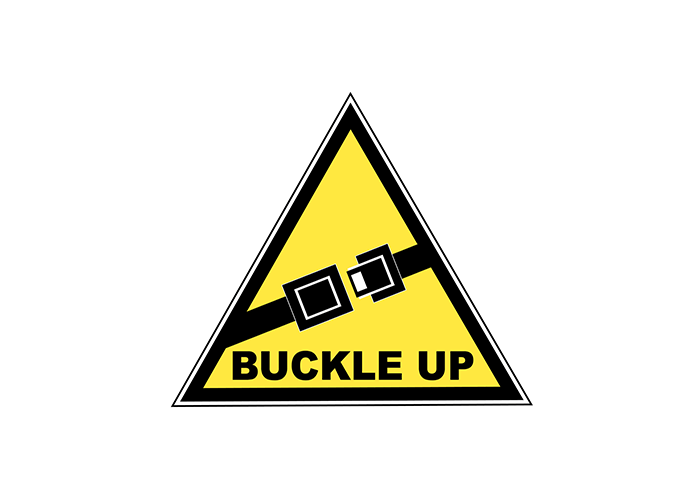MYTH 5
It takes too much time to fasten your safety belt 20 times a day.FACT
Buckling up takes about three seconds. Even buckling up 20 times a day requires only one minute.
MYTH 6
Good truck drivers don’t need to wear safety belts.
FACT
Good drivers usually don’t cause collisions, but it’s possible that during your career you will be involved in a crash caused by a bad driver, bad weather, mechanical failure, or tire blowout. Wearing a safety belt prevents injuries and fatalities by preventing ejection, and by protecting your head and spinal cord.
MYTH 7
A large truck will protect you. Safety belts are unnecessary.
FACT
In 2006, 805 drivers and occupants of large trucks died in truck crashes and 393 of them were not wearing safety belts. Of the 217 drivers and occupants who were killed and ejected from their vehicles, almost 81% were not wearing safety belts.
MYTH 8
Safety belts aren’t necessary for low-speed driving.
FACT
In a frontal collision occurring at 30 mph, an unbelted person continues to move forward at 30 mph causing him/her to hit the windshield at about 30 mph. This is the same velocity a person falling from the top of a three story building would experience upon impact with the ground.
MYTH 9
A lap belt offers sufficient protection.
FACT
The lap and shoulder belt design has been proven to hold a driver securely behind the wheel in the event of a crash, greatly increasing the driver’s ability to maintain control of the vehicle and minimizing the chance for serious injury or death.
OTHER FACTS TO CONSIDER:
- In 2006, 703 drivers of large trucks died in truck crashes and 314 of those drivers were not wearing safety belts. Of the 188 drivers killed who were ejected from their vehicles, almost 80% were not wearing safety belts.
- In 2006, 805 drivers and occupants of large trucks died in truck crashes and 393 of these were not wearing safety belts. Of the 217 drivers and occupants who were killed and ejected from their vehicles, approximately 81% were not wearing safety belts.
- Federal Motor Carrier Safety Regulations require commercial motor vehicle drivers to wear safety belts. (49 CFR 392.16)
- 52% of truck-occupant-fatalities in large trucks involve a rollover. Rollover in a large truck increases the likelihood of fatality by 30 times. In a rollover, a truck driver is 80% less likely to die when wearing a safety belt.
- About 23,000 large truck occupants suffered nonfatal injuries in crashes; of these, 4,000 were seriously injured.
Please buckle up and be safe, truckers! We want you to arrive alive! |
